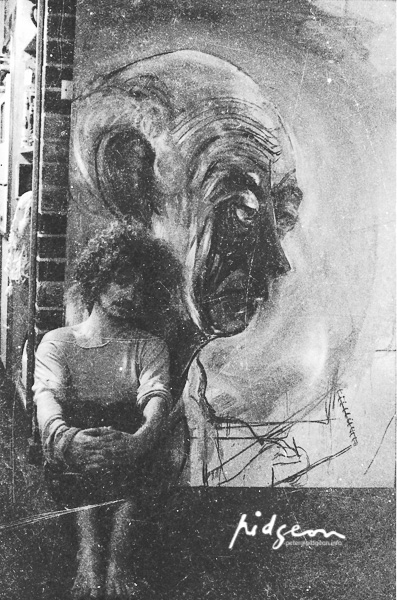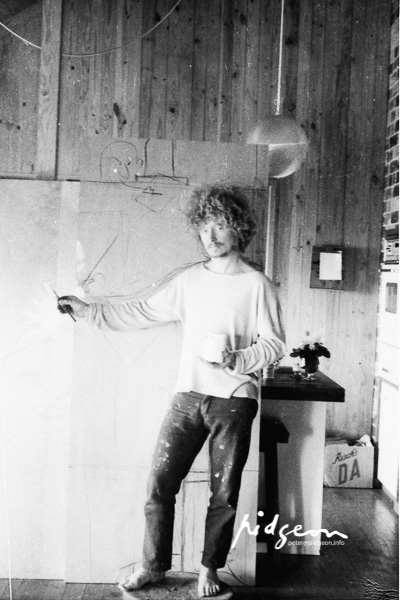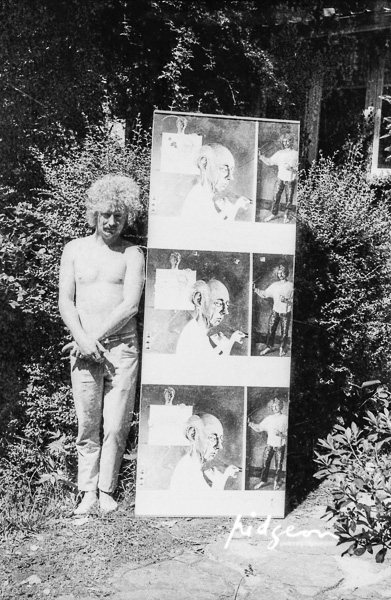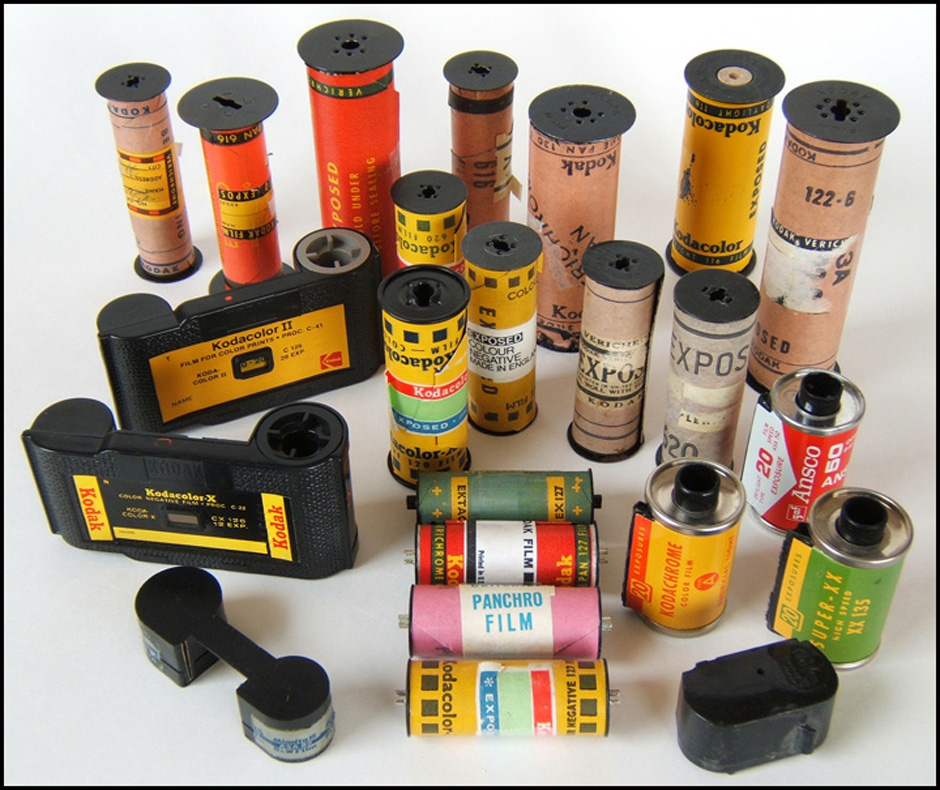
Introduction
This portrait was commissioned by Sydney bookmaker and horse owner, Mr Abe Davis of Coogee in memory of his late younger sister, Ettie and donated to the Great Synagogue, Sydney. Porush is dressed in his liturgical vestments, including his ṭallit (prayer shawl), standing at the bimah (reading platform) before the Ark.
The Commission
Wep initially visited the Great Synagogue several times to make sketches of the Rabbi “in his own atmosphere” however in the portrait he “could only suggest the synagogue atmosphere.”
Rabbi Porush undertook six sittings for Wep at his Northwood studio.


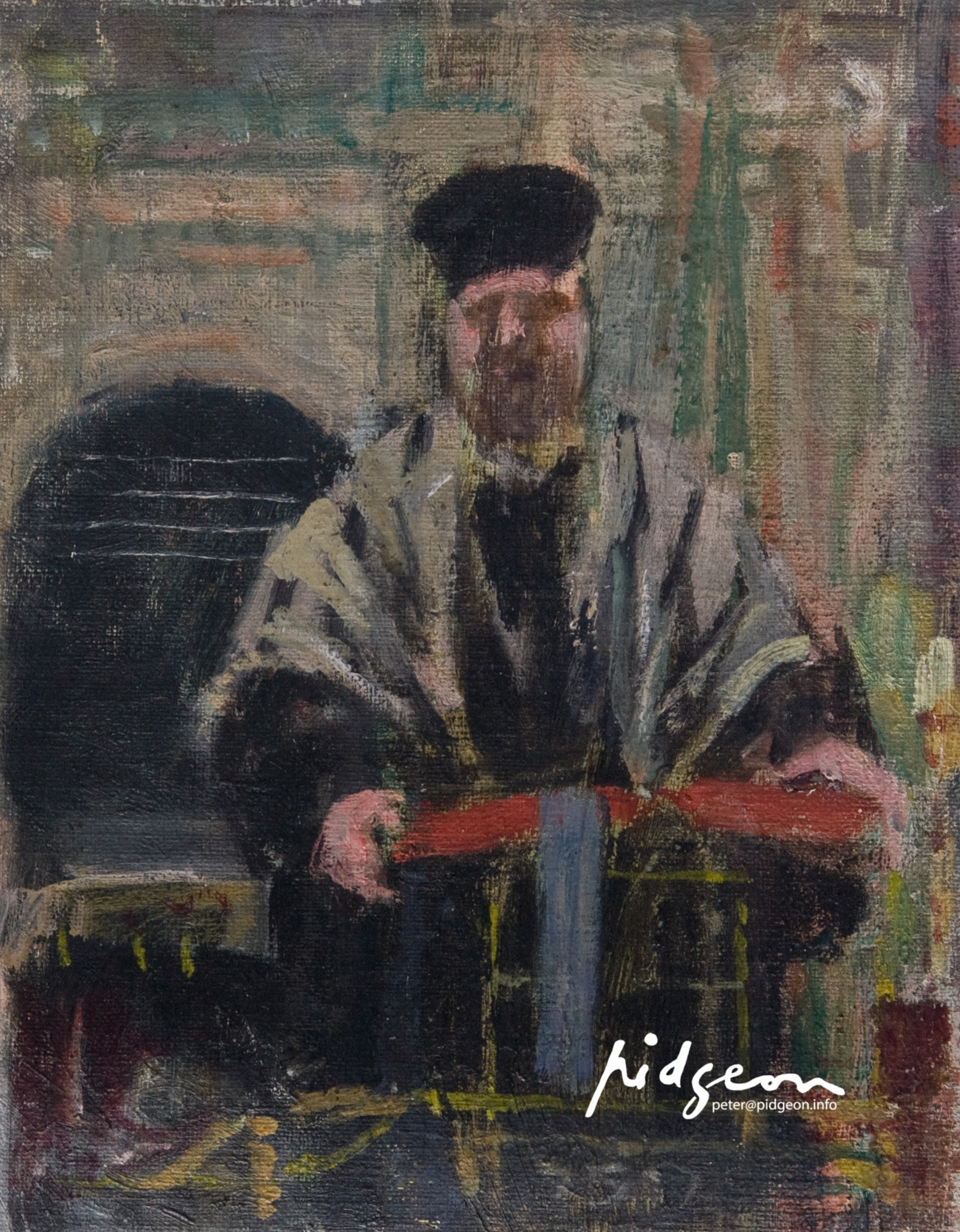


Davis was quoted 250 guineas (£262.10.0) for the portrait. In his letter of payment of £250 dated 1 December 1961, Davis wrote
“I am sure it not only met with my approval but will be much admired by everyone.
Thanking you for your co-operation in the background portion. Looking forward to next Sunday.”
The Great Synagogue
Reference to “next Sunday” was in fact Sunday, December 3 when Abe Davis presented the work to the Great Synagogue, represented by Mr. Israel Green, President of the Congregation, Mr. I. Goodman, Secretary of the Great Synagogue, and Rabbi Dr. Israel Porush. Abe Davis donated the portrait to the Great Synagogue on the occasion of the 21st anniversary of Rabbi Porush’s service to the community and in memory of his late sister, Ettie.
Wep must have reminded Davis at the presentation ceremony he had quoted the portrait in guineas (a 5% premium) as a subsequent cheque was issued the next day, December 4, for £12.10.0.

In another letter sent the same day, Rabbi Porush stated
“Everybody was pleased with the portrait you painted of me and thought it was not only a good likeness but also a work of art.”
The 1961 Archibald Prize
Following the official handing over ceremony, Wep requested he be able to enter the portrait in the 1961 Archibald Prize competition, for which it was selected as a finalist and ultimately selected as the winner for 1961. A second work submitted and also a finalist was a portrait of Kenneth Slessor, President, Journalists’ Club, Sydney, one of a number painted for the club commencing with his 1958 winning portrait of Ray Walker. Wep considered the Slessor portrait as one of his ten best. He would later state that often the work he thought was best was not what the judges would think. Coincidentally, the Slessor portrait was stolen twice, together with the 1958 winning Ray Walker portrait, and neither have been seen since 1997.
This was Wep’s 12th entry in the competition beginning with the 1948 prize and his second win. When announcing the work was to be entered in the competition, the Australian Jewish News commented that it was not known whether other paintings of Jewish interest had been entered into the competition. Wep had a tradition of submitting works right at closing time for submissions, typically New Year’s Eve upon which several friends would gather at Northwood to relax and welcome in the New Year.
Wep “thought the entries in the competition were moving more towards abstract expressions of portraiture and my style is fundamentally traditional.” Many of the portraits he undertook were commissioned, imposing greater constraints upon him to satisfy the sitter, their family and those who commissioned the work as opposed to other artists more free to test the more traditional boundaries of past competitions. In an art review Wep wrote for the Daily Telegraph (“Problems Of Portrait Art”, 1945, May 18, p9) Wep described these conflicting boundaries.
“To make a work of art of a portrait is invariably one of the most difficult of all tasks for a painter.
For it is possible to have either an indifferent likeness painted with great artistry or, a perfect image painted without art.
Between these hypothetical extremes, all one has to do is to manage total likeness and total art.
The more official the portrait, the greater the problem.
The restraints and inhibitions imposed upon the artist, either, by his patron or his subconscious self, tend to negate his freeest artistic, expression.
The more introspective, his vision, the more distressing this state of affairs.”
On the morning of Friday, January 19, 1962, Bill arose with the sun as was his practice to put in several hours work whilst the light remained gentle on his failing eyes. He had been diagnosed with severe glaucoma five years earlier immediately before his trip to Romania on a cultural exchange visa. The first of six eye operations awaited him come Christmas. It was a pleasant summer’s day, some cloudy periods clearing to fine, a light northeast wind and a maximum temperature of 78 degrees (26 C). It was son Peter’s third birthday and typically the Archibald announcement coincided with that event. Mr Justice Clancy, Chancellor of the University of N.S.W. was scheduled for his fifth sitting in the afternoon.
Late morning after completion of about six hours work, Bill headed up to the shops at Lane Cove to run some errands and fit in a quick band practice (or quiet time sketching) with the locals at the Longueville Hotel. Whilst he did not expect to win, there was still an air of tension awaiting the news of who was successful.
While enjoying his pre-lunch schooner of beer a reporter from The Sun newspaper broke the news of his second win to him. Bill had now become one of a handful of artists to have won the Archibald Prize at least twice. When asked about his win he said, “It’s quite a surprise; I didn’t expect it this year.”
After much back slapping and cheering congratulations from the locals, Bill quickly downed the remains of his schooner and returned to his home in Northwood where wife Dorothy and sons Graham and Peter awaited with the telegram for him with official notification of his win. (Presumably Dorothy had redirected the Sun reporter to the pub to let him know.) As a result of the influx of news reporters, phone calls and television news crews, Bill had to reschedule Mr Justice Clancy for the following Wednesday but still had to share the day of celebrations with son Peter’s birthday.
Rabbi Porush said he was pleasantly surprised the portrait had won and admitted he did not understand the finer points of art. “I am very pleased with it” he said. Dr Porush said it conveyed his conception of a rabbi addressing his congregation. “The portrait is severe and serious, more serious than I am in everyday life, but it is a good likeness.” He said credit for winning the prize belonged to the artist alone – “I contributed nothing, but merely posed for the portrait.”
Abe Davis said he was very happy with the portrait. “It depicts a real Jewish rabbi who is so lifelike he almost walks out of the picture.”

In an interview with ABC television upon announcement of the prize, Wep said:
“I went to the services on Saturday mornings, occasionally, just to get the flavour of the, the situation in the Synagogue and see how the rabbi stood at the pulpit and so on and from those, er, slight sketches I made surreptitiously, I’m not, didn’t disguise myself very well, but I, um, managed to get sufficient to, er, get the idea of, the picture.”



A congratulatory telegram from friend and first Archibald Prize subject, Ray Walker, Editor of the Canberra Times was received within hours of the announcement followed up a week later with a photo of himself with Rabbi Porush, whom he had met during the week when the rabbi visited Canberra for a citizenship convention. In it Ray states
“I had the pleasure of a yarn with my fellow subject, Dr Porush, the other day and we did you proud.
I enclose a picture of the two of your victims face to face.
My friends tell me on studying them it is a little difficult to distinguish which is the Rabbi.”

Sadly, this was may well have been the last time Ray and Bill were in touch as just two months later, on April 3, Ray died suddenly whilst visiting Melbourne
Upon the portrait’s return from exhibition at the Art Gallery, it was hung in the vestibule of the Great Synagogue.
Rabbi Dr Israel Porush
Israel Porosh was born in Jerusalem, Palestine (Israel) in 1907 into a strict Orthodox Jewish family. He studied until age 15 at the Etz Chaim Yeshiva at which time his father sent him to school in Germany in 1922 for a secular education. After matriculating in 1927, he attended the University of Berlin studying mathematics and other secular subjects at the Hildesheimer Rabbinical Seminary, Berlin. In 1931 he completed a doctoral thesis in algebra at the University of Marburg and was ordained in 1932.
Initially employed as a principal of a Talmud Torah, with the rise of Nazism under Hitler’s regime he lost his work permit in 1933 and migrated to London where he was employed as a tutor at Jews College. He enrolled in an English matriculation class at the London Polytechnic and with improving English accepted a job at Finchley Synagogue in 1934.
In 1938 Porush was offered but declined a post at the Melbourne Hebrew Congregation. However, in 1939, concerned at the imminent prospect of war in Europe, he accepted the position of senior rabbi at the Great Synagogue, Sydney where he was inducted in June 1940, a position he held for almost 33 years. As head of the rabbinical court (Av Beth Din), he grew to be regarded as the ‘uncrowned chief rabbi of Australia.’
An ultimate diplomat, he worked to bridge the gap between the established Anglo-Jewish community and post-war refugees and newcomers. A strong Orthodox, he was revered for combining ‘rabbinical learning, general scholarship and exceptional leadership’.
Rabbi Porush was not Wep’s first portrait of a member of the Australian Jewish community. In 1959 he was a finalist with a portrait of H.B. Newman Esq, the then President of the Executive Council of Australian Jewry.
The ABC television program Finding the Archibald with Rachel Griffiths, produced by Mint Pictures, in conjunction with the Art Gallery of New South Wales travelling exhibition Archie 100: A Century of the Archibald Prize, focussed on the changing face of the Archibald over its 100-year history. Throughout the development of this show and exhibition, many works of the Archibald’s first 50 years were dismissed as boring, institutionalised white middle-aged Australian men, without presenting any real investigation of the circumstances in which those works came about. Wep’s portrait could have easily been seen in the same light, but the show’s producers and AGNSW curator, Natalie Wilson picked up on the fact that this portrait of a rabbi, commissioned to celebrate his 21 years of service to the community, was awarded the prize at a time when the White Australia Policy was in full force and at times used to exclude some of the more fringe elements of European Jewish migration despite being clearly white.
It is also worth mentioning that Judy Cassab, a Holocaust survivor and member of the Australian Jewish community had won the year before with a portrait of Slovenian-Australian artist and Second World War resistance fighter, Stanislaus Rapotec; the second woman to ever win an Archibald, and which also features in the Archie 100 exhibition.

The portrait was also featured on the cover of The Bulletin magazine, June 20, 1964 in conjunction with an article “The Jews in Australia” by Sam Lipski about the Australian Jewish community and its role in Australian national life.
Who was Abe Davis?
Born Abraham Kopolowitz in Sydney, 1898, Abe was the second son and third child of Davis and Sarah Ann Kopolowitz. Davis, a tailor, Sarah and Abe’s two elder siblings, Harry and Janey had migrated to Sydney from Antwerp, Belgium in early 1897. Two further siblings followed, sister Ettie and younger brother Maurice. The family appears to have been close knit, both Harry and Abe initially following their father into the tailor’s trade, Maurice becoming a jeweller. Ettie was employed as a typist and Janey was listed in electoral records under home duties.
In May, 1921 Davis officially anglicised his name from Davis Kapolowitz to David Davis, sons Harry and Abraham following suit in September 1922. Presumably, Maurice and the girls did also as the family was known by the surname Davis from that point onwards.
The arrival at the Great Synagogue in 1940 of fellow European Jew in the form of Rabbi Porush, may have drawn the rabbi and family together. David and Sarah may have been interested to learn more first-hand from the rabbi about the persecution of their faith in their former homeland.
The family all lived together in Coogee, only Harry and Maurice eventually marrying and having children of their own. Their mother Sarah died in January 1942 and their father David in November the same year. Abe, Janey and Ettie continued to live together for the remainder of their lives.
From around the time of the Great Depression the family, living near Randwick racecourse, became connected with horse racing. By the early 1940s, the boys had already owned several horses which they leased to trainers. Morrie had also established himself as a well-known jeweller and Abe a well-known paddock bookmaker at Randwick. In 1945 Abe bought two yearling horses and gave one to his sisters, the first horse they had ever owned themselves.
In July 1961, Abe’s youngest sister Ettie died at home in Coogee. Being a close-knit family, Abe would have wanted to do something in recognition of his sister’s memory. Abe’s company, A. Davis Pty Ltd of 109 Oxford Street, Sydney was a Licensed Real Estate, Stock, Station and Business Agents and Auctioneers advertising services of rents collected, loans negotiated, estates managed, and insurance arranged. But was it Abe’s idea to commission the portrait of Rabbi Porush or was it at the suggestion of the Great Synagogue for him to do so and donate it in memory of Ettie?
Bill, despite being a professed atheist had a deep fascination with various religions, especially Jewish and eastern religions. He had numerous associates and friends who were Jewish including Sali Herman, Judy Cassab and fellow Northwood artist, Desiderius Orban, anyone of whom may have connected Abe to Bill to commission a painting. He certainly was in demand having broken the dominance of the Archibald by just two artists for the past two decades.
Following the success of the portrait winning the Archibald Prize, Abe in conjunction with sister Janey commissioned Bill to undertake a second portrait, a composite using photographs of their late sister Ettie. Following discussions with Bill that it would not turn out to their liking and was too difficult to bring it to a proper picture, a letter dated September 14, 1962, advised Bill they had decided to abandon the idea and requested he return the photographs of Ettie.
Coincidentally at the time of this portrait’s commission Abe owned the colt Gold Plate which had won a sequence of races. A dispute arose between Davis and trainer of the horse, Terry O’Leary, who leased the horse from Davis. A clause in the lease stated Davis had the right to sell, the horse for £5,000 or more for which Davis did, to his sister, Janey. O’Leary protested and said any sale should be by public auction. After refusing to acknowledge the sale O’Leary transferred the horse to Darby Munro’s stables. The A.J.C. cited Davis to appear before them on September 10 as part of their inquiry into Gold Plate but he failed to do so. He claimed to have retired as a bookmaker about a week earlier and was no longer interested in any dispute over Gold Plate and would not attend the inquiry. He again failed to appear for a second time on September 22 and as a consequence was disqualified until such time before he did appear before the stewards meaning he could not enter a racecourse and any share of his winnings were retained by the A.J.C.. Davis responded by giving his sister a half share in the horse. After making inquiries, the A.J.C. committee allowed O’Leary to continue his lease, which expired in December 1963. An application to the A.J.C. committee, however, enabled the horse to be sold by public auction, and he was sold for 2,000 guineas to Abe’s sister Janey (the only bidder), and was renamed Peace of Mind and leased to brother Maurice.
Abe did not officially return to racing and from then on conducted business as a real estate agent and senior Jewish communal fund raiser. He died in 1992.
Bibliography
William Edwin Pidgeon (Wep) Archives, PIC-20163, National Library of Australia
Problems Of Portrait Art (1945, May 18). The Daily Telegraph (Sydney, NSW : 1931 – 1954), p. 9. Retrieved July 4, 2021, from http://nla.gov.au/nla.news-article248015164
Winner: Archibald Prize 1961; William Pidgeon, Rabbi Dr I Porush, Art Gallery of New South Wales. Retrieved from https://www.artgallery.nsw.gov.au/prizes/archibald/1961/18048/
DAVIS, Ettie, (1961, 1 August), DEATHS, The Sydney Morning Herald, p24
Rabbi’s portrait donated (1961, December 8). The Australian Jewish Times (Sydney, NSW : 1953 – 1990), p. 4. Retrieved June 30, 2021, from http://nla.gov.au/nla.news-article263146188
Archibald prize entry (1962, January 5). The Australian Jewish News (Melbourne, Vic. : 1935 – 1999), p. 1. Retrieved June 30, 2021, from http://nla.gov.au/nla.news-article262364009
A SUBJECT IN COMMON (1962, January 25). The Canberra Times (ACT : 1926 – 1995), p. 16. Retrieved July 4, 2021, from http://nla.gov.au/nla.news-article104921041
Winning portrait in G.S. vestibule (1962, January 26). The Australian Jewish Times (Sydney, NSW : 1953 – 1990), p. 3. Retrieved June 30, 2021, from http://nla.gov.au/nla.news-article263146811
PRIZE FOR PORTRAIT (1962, February 16). The Australian Jewish News (Melbourne, Vic. : 1935 – 1999), p. 12. Retrieved June 30, 2021, from http://nla.gov.au/nla.news-article262364982
ABC Library Sales ID: 463811 – SEGMENT – ART PRIZES, https://www.abccommercial.com/librarysales/
Sydney Artist Wins Archibald Prize (1962, January 20), Sydney Morning Herald, p1
Work on portrait began in Synagogue, (1962, January 20), Daily Telegraph, p4
Archibald Prize to Sydney Artist; Rich Rabbi portrait by Pidgeon, (1962, January 19), Daily Mirror, p5
Big art honour to ‘Wep’, (1962, January 19), The Sun, p5
Sydney man wins £750 art award (1962, January 20), The Sydney Morning Herald, p3
A SUBJECT IN COMMON (1962, January 25). The Canberra Times (ACT : 1926 – 1995), p. 16. Retrieved July 1, 2021, from http://nla.gov.au/nla.news-article104921041
Meacham, S. (2021, June 24). The portrait of a rabbi that won the Archibald Prize. Plus 61J Media, Australia, Israel and the Jewish world. https://plus61j.net.au/featured/the-portrait-of-a-rabbi-that-won-the-archibald-prize/
Suzanne D. Rutland, ‘Porush, Israel (1907–1991)’, Australian Dictionary of Biography, National Centre of Biography, Australian National University, https://adb.anu.edu.au/biography/porush-israel-15194/text26388, published online 2014, accessed online 1 July 2021.
Charak, S.E. (2019).Anglo-Jews and Eastern European Jews in a White Australia, A thesis submitted in partial fulfilment of the requirements for the degree of BA (Hons) in history, University of Sydney, https://ses.library.usyd.edu.au/bitstream/handle/2123/21137/charak_s_thesis_2019.pdf
J-Wire Newsdesk (2021, June 29). The rabbi’s portrait takes the Archibald Prize…watch it on TV. J-Wire, Digital Jewish news daily for Australia and New Zealand. https://www.jwire.com.au/the-rabbis-portrait-takes-the-archibald-prize-watch-it-on-tv/



















